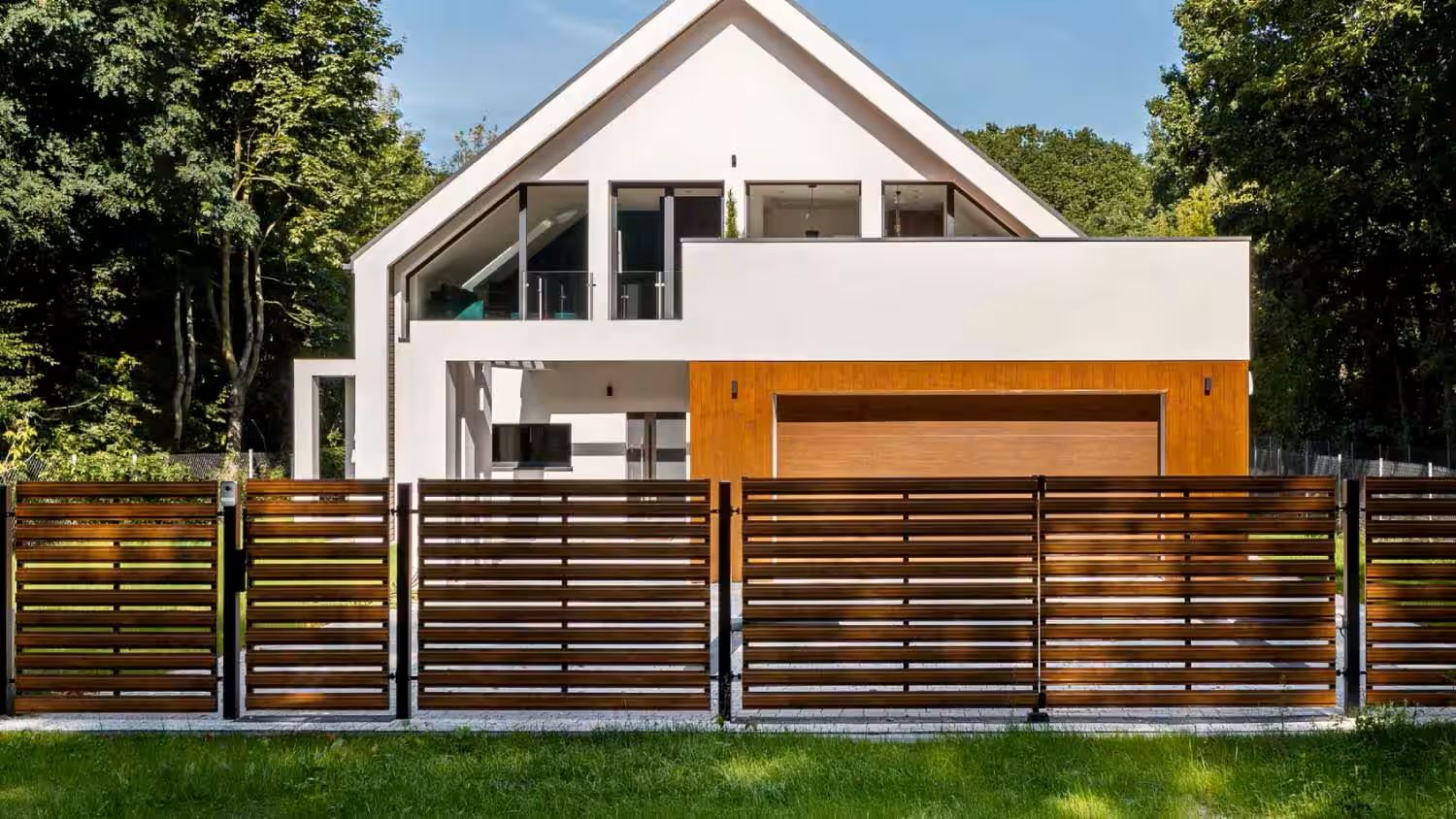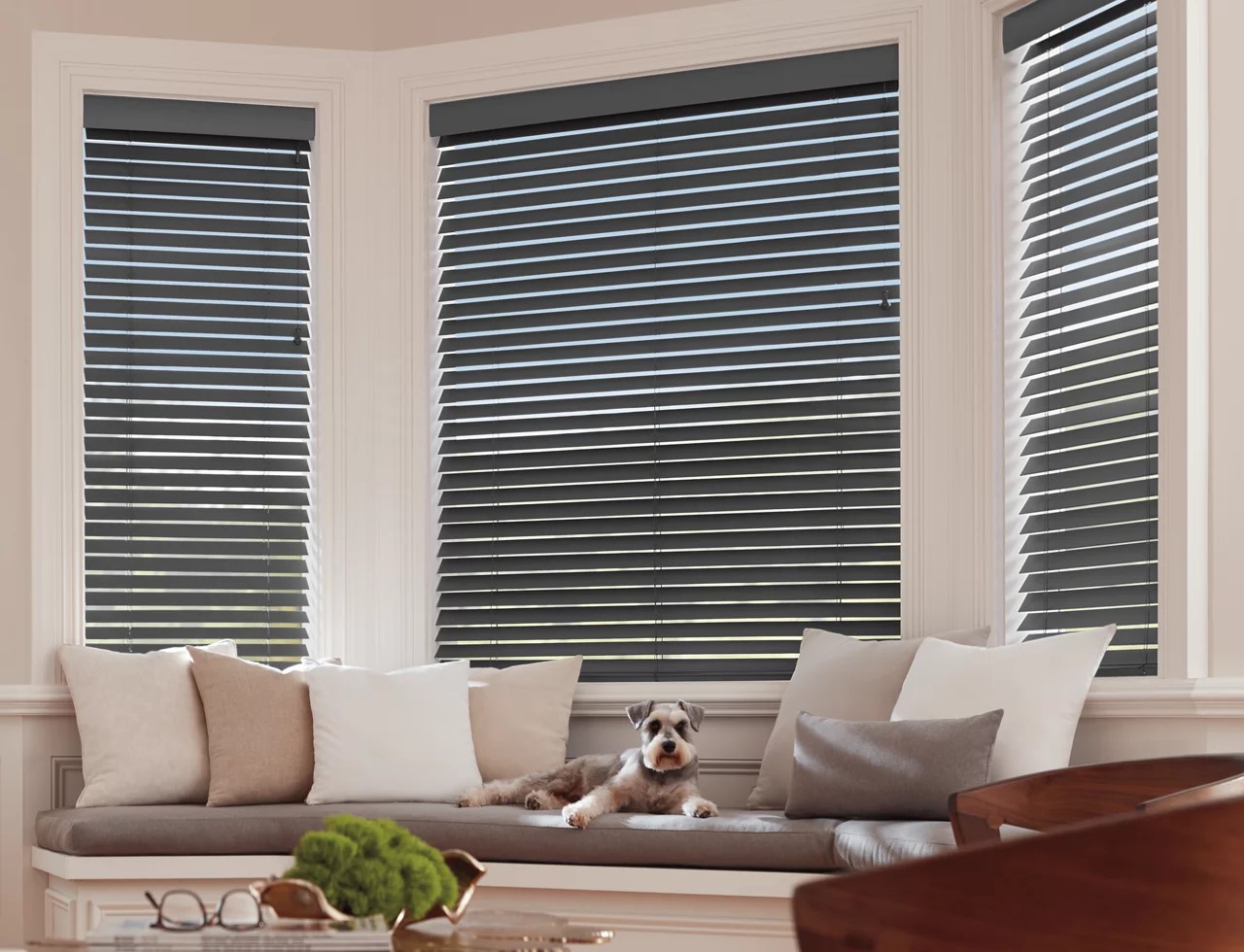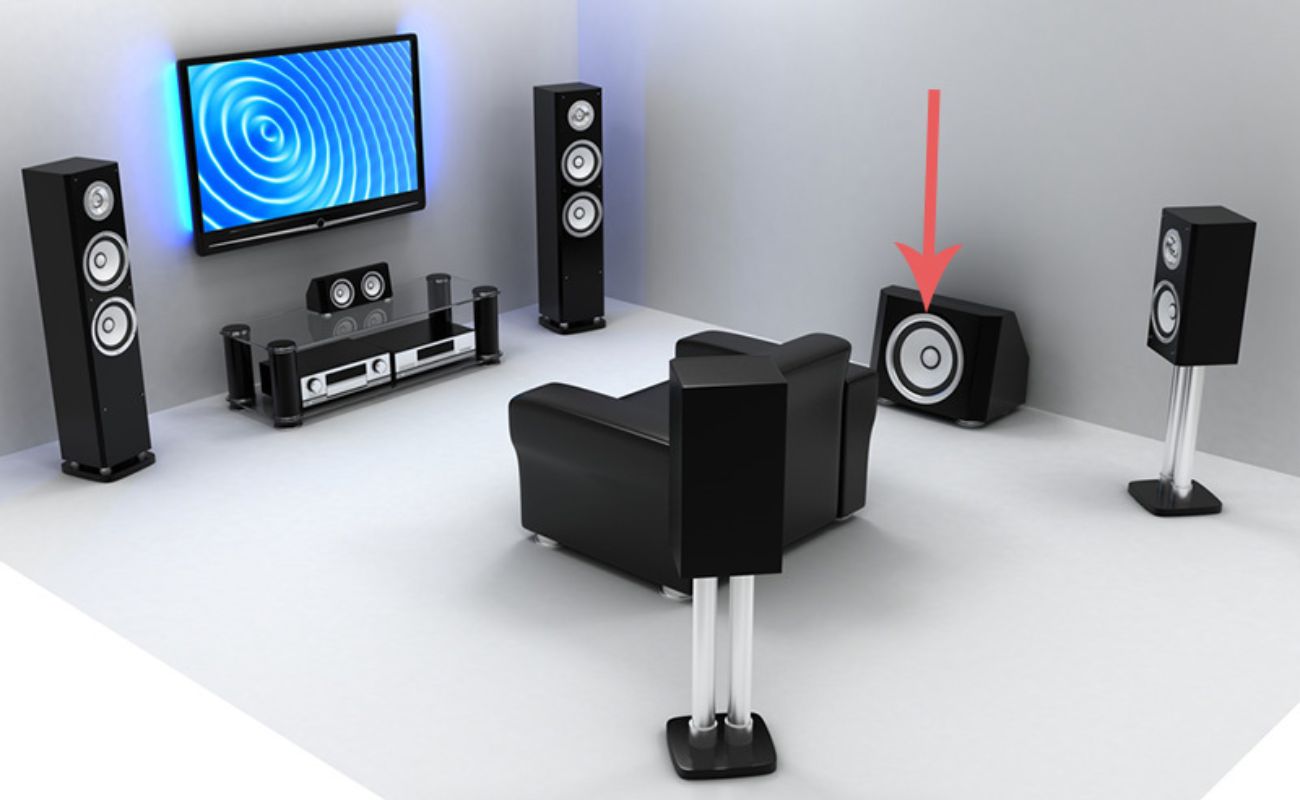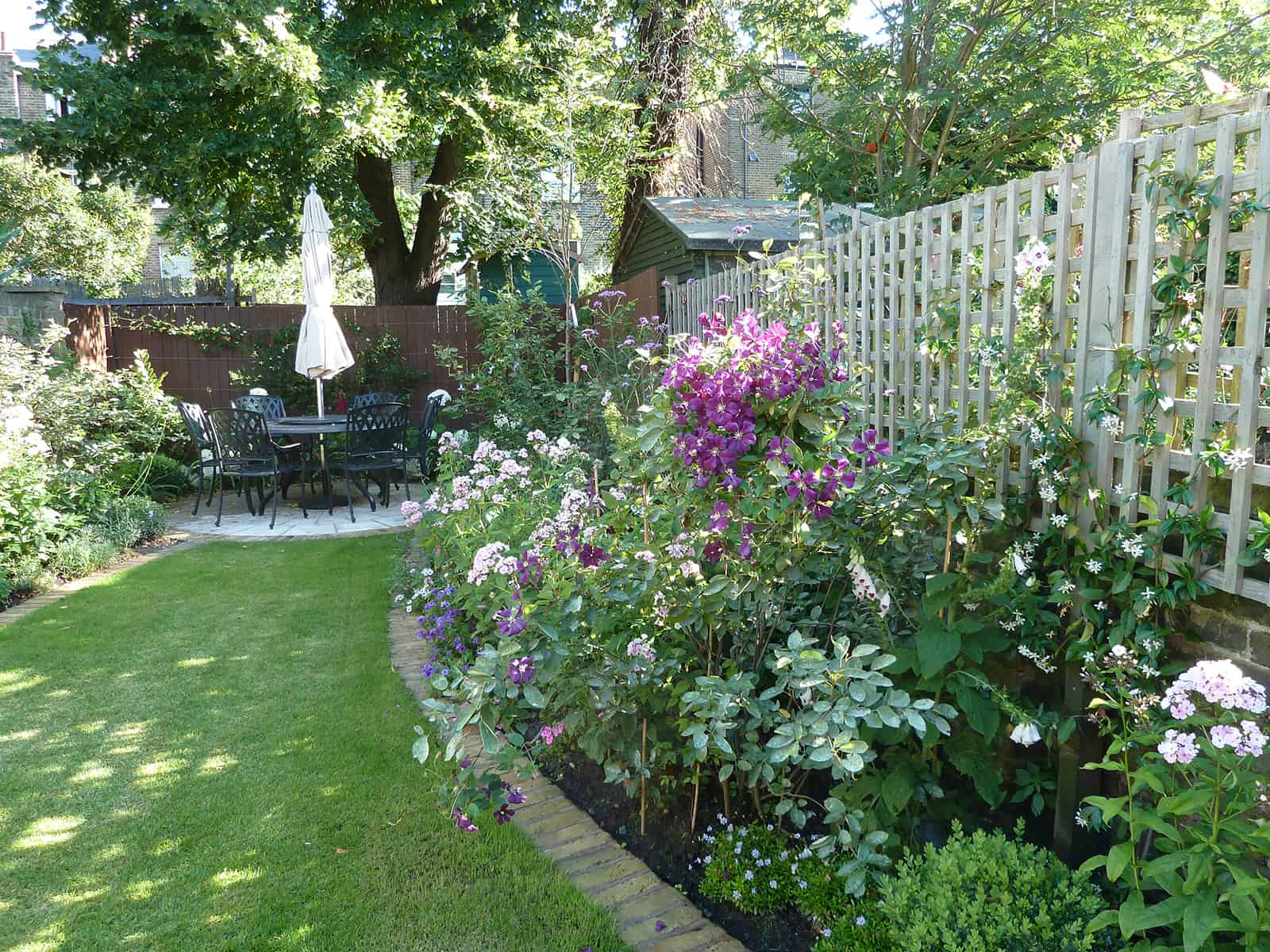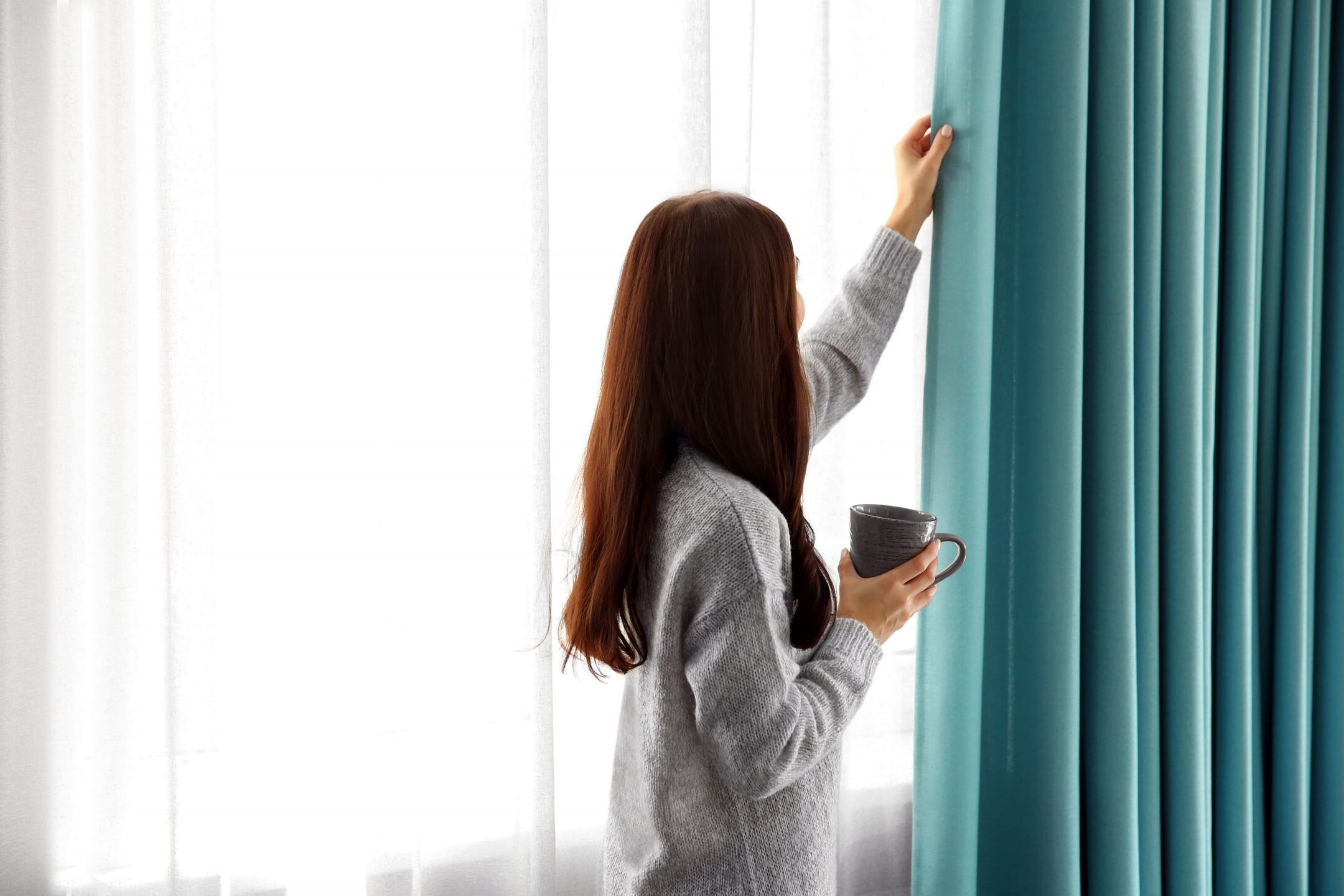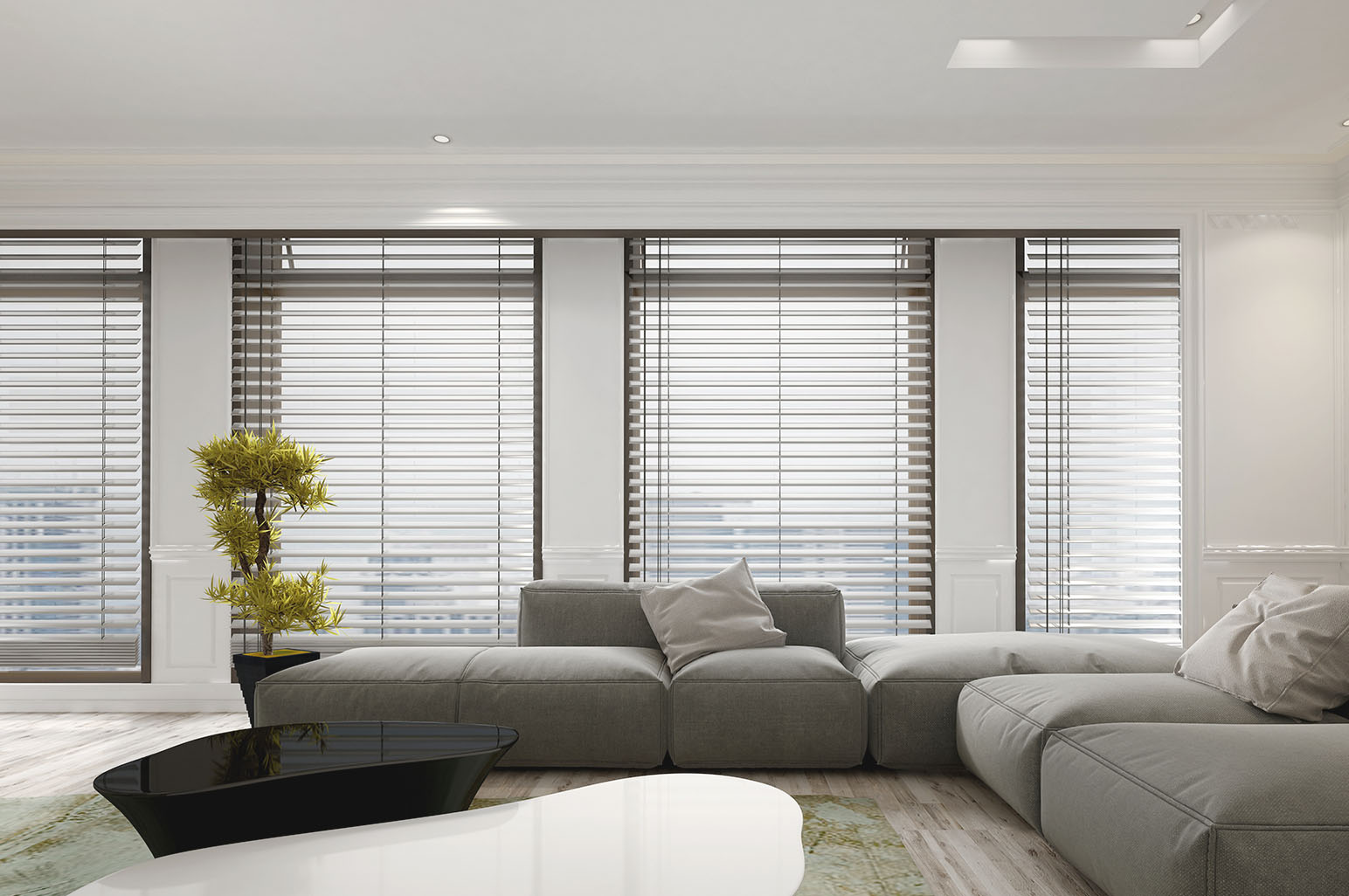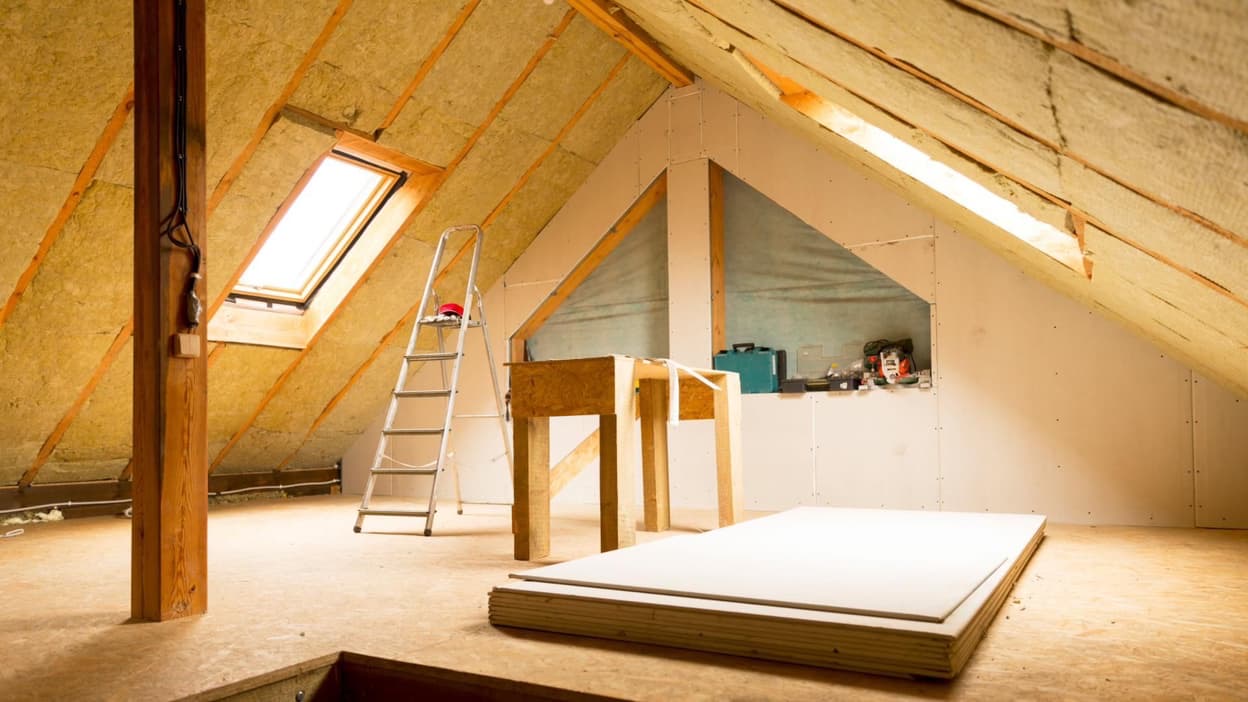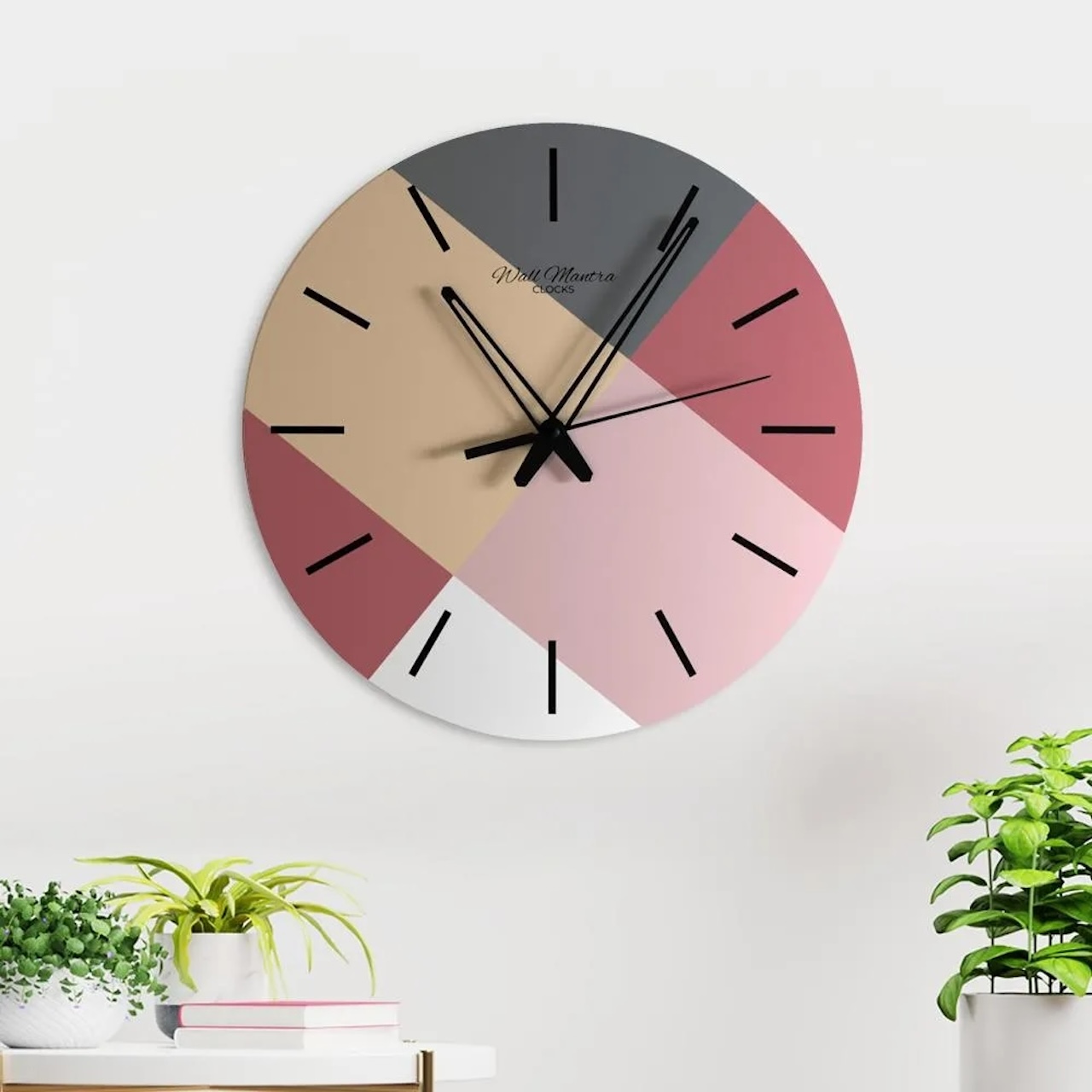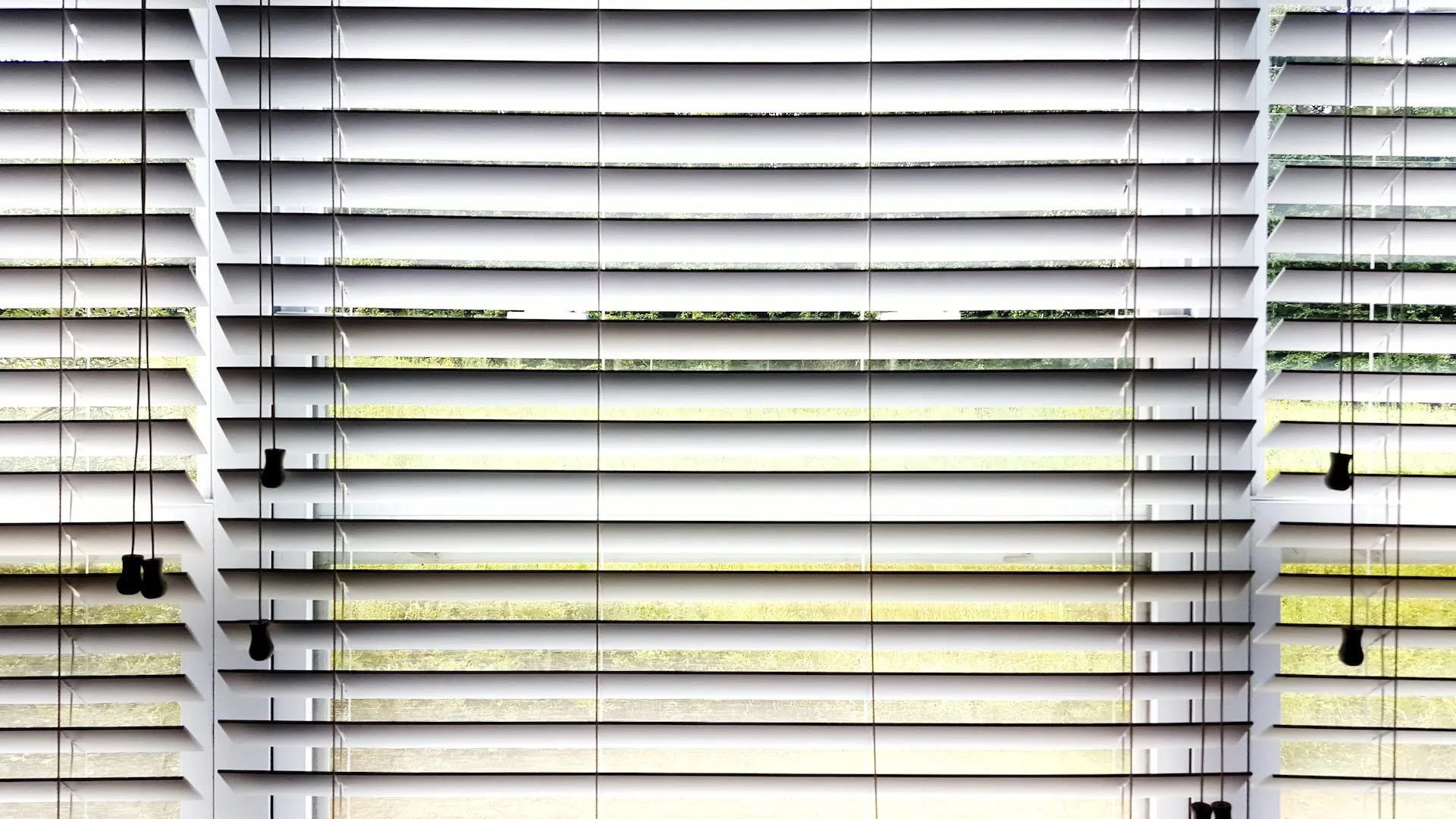

Articles
What Way Should Blinds Face
Modified: January 5, 2024
Learn the best way to hang blinds and which direction they should face for maximum benefit. Read our informative articles on blind placement and orientation.
(Many of the links in this article redirect to a specific reviewed product. Your purchase of these products through affiliate links helps to generate commission for Storables.com, at no extra cost. Learn more)
Introduction
Blinds play a crucial role in enhancing the aesthetics and functionality of a space, whether it’s a home, office, or any other type of building. However, many people overlook an important aspect when installing blinds: their orientation. The orientation of blinds can significantly impact the amount of natural light, privacy, and even energy efficiency in a room. In this article, we will explore the importance of blind orientation and provide guidance on how to select the optimal orientation for your blinds.
Choosing the right blind orientation is essential for several reasons. Firstly, it affects the amount of natural light that enters a room. The direction in which blinds face determines how much sunlight is allowed to filter through. Secondly, blind orientation affects privacy levels. Properly positioned blinds can provide privacy from prying eyes while still allowing natural light to enter the room. Thirdly, blinds facing the optimal direction can also impact energy efficiency by maximizing or minimizing heat gain or loss.
When determining the ideal blind orientation, several factors need to be taken into consideration. These factors include the geographical location of the building, the room’s purpose, the time of day when the room is most used, the view outside the window, and the climate. By considering these factors, you can make an informed decision about the orientation of your blinds.
It is important to note that blinds can be adjusted and tilted to control the amount of sunlight and privacy, regardless of their orientation. However, selecting the optimal orientation as a starting point can make it easier to achieve the desired lighting and privacy levels without constant adjustments.
In the following sections, we will explore the optimal blind orientation for different directions – east-facing, west-facing, south-facing, and north-facing. By understanding the unique characteristics and challenges associated with each direction, you will be able to make an informed decision when orienting your blinds.
Key Takeaways:
- Blind orientation impacts natural light, privacy, and energy efficiency. East-facing blinds capture morning sunlight, while west-facing blinds provide warm afternoon light. South-facing blinds balance light and privacy, and north-facing blinds offer consistent, indirect illumination.
- Consider factors like geographical location, room purpose, and climate when choosing blind orientation. Experiment with materials, adjustable slats, and additional window treatments to optimize lighting and privacy. Personalize the orientation to create a comfortable and visually appealing space.
Read more: What Way Should A Vertical Garden Face
Importance of Blind Orientation
The orientation of blinds is more than just a matter of aesthetics. It can significantly impact the functionality and comfort of a space. Let’s delve into the importance of blind orientation and why it should be carefully considered.
Natural Light: One of the key reasons why blind orientation matters is its influence on natural light. The direction in which blinds face determines the amount of sunlight that enters a room. East-facing blinds, for example, allow for gentle morning sunlight, while west-facing blinds provide warm afternoon light. Properly orienting blinds can maximize the amount of natural light and create a bright and uplifting ambiance in a room.
Privacy: Privacy is another crucial factor affected by blind orientation. By positioning blinds correctly, you can achieve the right balance between natural light and privacy. South-facing blinds, for instance, offer privacy during the day while still allowing a sufficient amount of light to filter through. The orientation of your blinds can ensure that your space remains private without sacrificing the benefits of natural light.
Energy Efficiency: The orientation of blinds can also impact the energy efficiency of a space. By selecting the appropriate orientation, you can regulate heat gain or loss, reducing the reliance on heating or cooling systems. For example, if you live in a hot climate, west-facing blinds can help block the harsh afternoon sun, preventing excessive heat buildup and reducing the need for air conditioning.
View and Scenery: Consider the view outside your window when deciding on blind orientation. North-facing blinds can provide an unobstructed view of natural scenery, while still offering control over sunlight and privacy. By taking advantage of scenic views, you can create a more pleasant and visually appealing environment.
Climate and Seasonal Changes: The climate of your location and the changing seasons should also influence the orientation of your blinds. In colder climates, south-facing blinds can help capture valuable sunlight and warm up the room. In warmer climates, east or west-facing blinds can prevent excessive heat from entering the space during the hottest parts of the day.
By carefully considering these factors when selecting the orientation of your blinds, you can create a comfortable, bright, and energy-efficient environment. It is essential to strike a balance between the benefits of natural light, privacy, and energy efficiency to ensure optimal performance.
In the next sections, we will delve into the specific considerations for each direction – east, west, south, and north-facing blinds. By understanding the unique characteristics and challenges associated with each orientation, you will be able to make an informed decision that suits your specific needs.
Factors to Consider
When determining the orientation of blinds, it is important to consider several factors. These factors will help you make an informed decision that takes into account the specific characteristics of your space. Let’s explore the key factors to consider when selecting the orientation of your blinds:
Geographical Location: The geographical location of your building has a significant impact on the amount of sunlight and the angle at which it enters a room. Understanding the direction of the sun throughout the day in your location will help determine the best orientation for your blinds.
Room’s Purpose: Consider the purpose and function of the room when deciding on blind orientation. For example, bedrooms may require a darker ambiance for better sleep, while living rooms and offices may benefit from natural light. Understanding the specific needs of each room will help you choose the most suitable orientation for your blinds.
Time of Day: Take into account the time of day when the room is most used. If you primarily use the room in the morning, you may want to prioritize east-facing blinds for gentle morning light. Conversely, if the room is used more in the afternoon, west-facing blinds may be more appropriate for warm afternoon light.
View Outside Window: Consider the view outside your window and how you want to showcase or block it. North-facing blinds can offer an unobstructed view, while south-facing blinds may be better for preserving privacy from adjacent buildings or busy streets.
Climate: The climate of your location plays a crucial role in selecting blind orientation. In hot climates, you may want to consider west-facing blinds to block the intense afternoon sun and reduce the need for air conditioning. In colder climates, south-facing blinds can help capture sunlight and warm up the room.
Seasonal Changes: Keep in mind that the angle of the sun changes throughout the year due to seasonal variations. Consider how the sun’s position will shift and adjust the amount of light that enters the room accordingly. This may require a flexible blind orientation or the addition of curtains or other window treatments.
By carefully considering these factors, you can select the most suitable orientation for your blinds. It is important to strike a balance between natural light, privacy, energy efficiency, and the specific needs of each room. Remember, blind orientation can always be adjusted and tailored to your preferences, so don’t be afraid to experiment and make changes if needed.
In the following sections, we will explore the optimal blind orientation for each direction – east, west, south, and north-facing blinds. By understanding the unique characteristics and considerations associated with each direction, you will be able to make an informed decision that maximizes the benefits of your blinds.
Optimal Blind Orientation
When it comes to selecting the optimal orientation for your blinds, there is no one-size-fits-all answer. The best orientation will depend on various factors, including geographical location, room function, and personal preferences. However, let’s explore some general guidelines for each direction to help you make an informed decision:
East-Facing Blinds:
When facing east, blinds have the advantage of capturing soft morning sunlight. This orientation is ideal for rooms that are primarily used in the early hours, such as breakfast nooks or bedrooms. East-facing blinds can create a welcoming and refreshing ambiance, allowing you to start your day with gentle light. However, it’s worth noting that east-facing blinds may allow for more intense sunlight later in the day, which can result in glare and heat buildup. Consider pairing them with curtains or shades for greater flexibility in adjusting the light levels throughout the day.
Read more: Which Way Should A Pergola Face?
West-Facing Blinds:
West-facing blinds are great for capturing warm afternoon light. They can create a cozy and inviting atmosphere in living rooms or areas where you often unwind at the end of the day. However, west-facing blinds may also expose your space to intense and direct sunlight, which can raise the temperature and cause glare. To mitigate these issues, consider blinds with adjustable slats or opt for thicker materials that provide better light control. Using window film or curtains can also help diffuse and soften the sunlight during the hottest parts of the day.
South-Facing Blinds:
South-facing blinds offer a balance between natural light and privacy. They allow for ample sunlight throughout the day while preserving privacy from adjacent buildings and busy streets. South-facing blinds are versatile and can be used in various rooms, such as living rooms, home offices, and dining areas. To make the most of south-facing blinds, choose materials that allow diffused light to enter the space, preventing harsh glare. Consider blinds with adjustable slats to control the amount of light and privacy throughout the day.
North-Facing Blinds:
North-facing blinds provide consistent, indirect light throughout the day. They are ideal for rooms that require a bright and well-lit environment, such as studios, home gyms, or workspaces. North-facing blinds allow for natural light without the direct glare or heat associated with other orientations. Consider using blinds with lighter-colored materials to maximize the reflection of light into the room. You may also want to pair north-facing blinds with curtains or shades for added versatility in adjusting the light levels and maintaining privacy when needed.
Remember, these recommendations are general guidelines, and the optimal orientation may vary based on your specific needs and circumstances. Adjustments such as the use of curtains, shades, or window films can help fine-tune the amount of light, privacy, and temperature control in a room. Experimentation and personalization are key to finding the perfect blind orientation for your space.
Now that we have explored the optimal orientations for each direction, let’s move on to the next sections, where we will delve deeper into the specific considerations for east, west, south, and north-facing blinds. By understanding the unique characteristics of each direction, you will be able to make an informed decision and maximize the benefits of your blinds.
East-Facing Blinds
When it comes to east-facing blinds, they have the advantage of capturing soft morning sunlight. This orientation is ideal for rooms that are primarily used in the early hours, such as breakfast nooks or bedrooms. East-facing blinds can create a welcoming and refreshing ambiance, allowing you to start your day with gentle light.
With east-facing blinds, you can take advantage of the natural beauty of the sunrise as it gradually fills the room with warm and golden hues. The soft morning light can create a peaceful and serene atmosphere, perfect for starting your day on a positive note.
However, it’s worth noting that east-facing blinds may allow for more intense sunlight later in the day, especially during the summer months. This can result in glare and heat buildup, which may be undesirable depending on the room and time of year.
To mitigate these issues, consider pairing your east-facing blinds with curtains or shades. This will give you greater flexibility in adjusting the light levels throughout the day and provide additional protection from direct sunlight. You can open the blinds in the morning to enjoy the gentle sunlight, and then close the curtains or shades later in the day to block out the intense sunlight.
When selecting materials for your east-facing blinds, consider options that allow diffused light to enter the room. Materials such as sheer fabrics or light-filtering blinds can help soften the sunlight, reducing glare and creating a more comfortable environment. These materials still allow for natural light to brighten the room but provide a degree of privacy and light control.
In rooms where privacy is a concern, such as bedrooms or bathrooms, consider using blinds with adjustable slats. This will allow you to tilt the slats to control the amount of light entering the room while maintaining your privacy.
Overall, east-facing blinds can create a beautiful and invigorating ambiance in the morning. By pairing them with curtains or shades and choosing the right materials, you can control the amount of sunlight, reduce glare, and enjoy the benefits of the soft morning light.
Keep in mind that personal preferences and the specific characteristics of the room will also play a role in determining the optimal blind orientation. It’s important to strike a balance between natural light, privacy, and comfort to create a space that suits your needs and enhances your overall well-being.
Next, let’s explore the considerations for west-facing blinds and how they can optimize the lighting and atmosphere in your space.
Read more: Which Way Should Breakers Face
West-Facing Blinds
When it comes to west-facing blinds, they have the advantage of capturing warm afternoon light. This orientation is ideal for rooms where you want to create a cozy and inviting atmosphere, such as living rooms or areas where you often unwind at the end of the day.
With west-facing blinds, you can take advantage of the soothing and golden hues that fill the room during the afternoon. This warm light can create a relaxing atmosphere, perfect for relaxation and spending quality time with loved ones.
However, it’s important to note that west-facing blinds may expose your space to intense and direct sunlight, especially during the summer months. This can result in glare and heat buildup, making the room uncomfortable and potentially causing damage to furniture or flooring.
To mitigate these issues, there are a few strategies you can consider. First, choose blinds with adjustable slats that allow you to control the amount of light entering the room. By tilting the slats, you can redirect the sunlight and reduce glare while still enjoying the warm illumination.
Additionally, consider selecting blinds made from materials that offer better light control. Thicker fabrics or blinds with blackout features can help block out the intense sunlight when desired, creating a more comfortable environment. Adding curtains or shades to complement the blinds can provide an extra layer of light control and insulation from both heat and cold.
If maintaining a view is important to you, consider using window film or sheer blinds that filter the light while still allowing you to see outside. This way, you can enjoy the benefits of natural light without compromising on privacy or the view.
To maximize the energy efficiency of west-facing blinds, you can also consider the installation of external shading devices like awnings or exterior blinds. These additions can effectively block out the heat and prevent it from entering your space, reducing the need for air conditioning and improving energy efficiency.
Remember to consider the function of the room and your personal preferences when choosing the orientation and design of west-facing blinds. If you have a home office or a room where glare on screens can be problematic, consider using blinds with anti-glare features or positioning workstations away from direct sunlight.
Overall, west-facing blinds can create a cozy and inviting atmosphere in your space. By using adjustable slats, light-controlling materials, and external shading devices, you can manage the amount of sunlight, reduce glare, and create a comfortable environment that suits your needs and preferences.
Next, let’s explore the considerations for south-facing blinds and how they can optimize the lighting and privacy in your space.
South-Facing Blinds
South-facing blinds offer a balance between natural light and privacy. They allow for ample sunlight throughout the day while preserving privacy from adjacent buildings and busy streets. South-facing blinds are versatile and can be used in various rooms, such as living rooms, home offices, and dining areas.
With south-facing blinds, you can enjoy the benefits of abundant natural light, which can create a bright and inviting atmosphere in your space. The consistent exposure to sunlight throughout the day can also help boost your mood and enhance productivity.
When selecting materials for south-facing blinds, consider options that allow diffused light to enter the room. Sheer fabrics or light-filtering blinds can help soften the sunlight, reducing glare and creating a more comfortable environment. These materials still allow for natural light to brighten the room and provide a sense of openness while maintaining a degree of privacy and light control.
If privacy is a concern, especially during the evening when the lights inside your space may make it more visible from outside, consider using blinds with adjustable slats. This will allow you to tilt the slats and control the amount of light entering the room while maintaining your privacy.
Another option for south-facing blinds is to use blinds with a dual-function, such as top-down, bottom-up blinds. These blinds offer versatility by allowing you to adjust the top or bottom portion of the window independently. This way, you can let sunlight enter from the top while maintaining privacy with the bottom portion.
In spaces where you desire maximum privacy while still allowing light to filter through, consider installing blinds along with sheer curtains. This combination will give you the flexibility to adjust the level of privacy and light control throughout the day.
One consideration to keep in mind with south-facing blinds is the potential for solar heat gain, especially in warmer climates. To mitigate this, consider installing blinds with reflective backing or using window films that can help block or reflect the heat away from the room. Combining blinds with energy-efficient curtains or shades can also aid in maintaining a comfortable indoor temperature.
Ultimately, the orientation of south-facing blinds allows you to strike a balance between natural light and privacy. By selecting the right materials, adjusting slats, and combining blinds with other window treatments, you can optimize the lighting and atmosphere in your space.
Next, let’s explore the considerations for north-facing blinds and how they can optimize the lighting and ambiance in your space.
When installing blinds, the slats should face downwards when the window is open to allow for privacy while still letting in natural light. When the window is closed, the slats should face upwards to prevent dust from settling on them.
North-Facing Blinds
North-facing blinds provide consistent, indirect light throughout the day. This orientation is ideal for rooms that require a bright and well-lit environment, such as studios, home gyms, or workspaces.
With north-facing blinds, you can enjoy the benefits of natural light without the direct glare or heat associated with other orientations. The soft and gentle illumination can create a calm and soothing ambiance in your space.
When selecting blinds for a north-facing window, consider using materials that allow for maximum light penetration. Lightweight fabrics or blinds with a light-filtering feature can help maximize the amount of natural light entering the room, making it feel more open and spacious.
Since north-facing rooms typically receive consistent but indirect light, you have more flexibility in controlling the light levels. Blinds with adjustable slats allow you to fine-tune the amount of light entering the room, providing greater customization and versatility.
While privacy may not be a top concern with north-facing blinds, you can still maintain privacy by using blinds with top-down, bottom-up functionality. This allows you to create a balance between natural light and maintaining visibility within the room.
If you have a room with a desirable view outside, such as a garden or a scenic landscape, north-facing blinds offer the opportunity to enjoy the view without compromising on natural light. Opt for blinds with a sheer or light-filtering material that allows you to appreciate the view while still benefiting from the gentle illumination.
To enhance the energy efficiency of north-facing blinds, consider adding additional window treatments, such as thermal curtains or shades. These can help insulate the windows, reducing heat loss during colder months and improving energy efficiency.
When it comes to enhancing the visual appeal of a north-facing room, consider incorporating plants and light-colored décor. The ample natural light can support the growth of indoor plants and bring life and vibrancy to the space. Light-colored furniture and accessories can also help reflect the light, making the room feel brighter and more open.
Overall, north-facing blinds provide consistent and indirect natural light, creating a bright and welcoming atmosphere in your space. By selecting materials that allow for maximum light penetration, using adjustable slats, and incorporating complementary window treatments, you can optimize the lighting and ambiance in your north-facing room.
Now that we have explored the considerations for each direction, let’s conclude our discussion with a summary of the key factors to consider when selecting the optimal orientation for your blinds.
Conclusion
When it comes to selecting the optimal orientation for your blinds, it is essential to consider various factors that can impact the functionality and atmosphere of your space. Blind orientation can significantly influence the amount of natural light, privacy, and energy efficiency within a room.
By taking into account factors such as geographical location, room purpose, time of day, view outside the window, and climate, you can make an informed decision when orienting your blinds.
East-facing blinds are perfect for capturing soft morning sunlight, creating a refreshing and uplifting ambiance. West-facing blinds, on the other hand, capture warm afternoon light, creating a cozy and inviting atmosphere. South-facing blinds provide a balance between natural light and privacy, while north-facing blinds offer consistent and indirect illumination throughout the day.
Choosing the right orientation for your blinds can optimize the lighting, privacy, and energy efficiency in your space. By selecting materials that allow for diffused light, using blinds with adjustable slats, and integrating additional window treatments, you can fine-tune the light levels and enhance the functionality of your blinds.
It is important to remember that while these guidelines provide general recommendations, personal preferences and the specific characteristics of your space should also be taken into consideration. It may be necessary to experiment and make adjustments to find the perfect orientation that suits your needs.
Ultimately, the right blind orientation can transform your space, creating a comfortable and visually appealing environment. It can enhance the natural beauty of sunlight, while providing privacy and improving energy efficiency.
So, take the time to carefully consider the factors discussed in this article when selecting the orientation of your blinds. By doing so, you can ensure that your blinds not only enhance the aesthetics of your space but also serve their purpose in optimizing the lighting and privacy for a more enjoyable and functional living or working environment.
Frequently Asked Questions about What Way Should Blinds Face
Was this page helpful?
At Storables.com, we guarantee accurate and reliable information. Our content, validated by Expert Board Contributors, is crafted following stringent Editorial Policies. We're committed to providing you with well-researched, expert-backed insights for all your informational needs.
